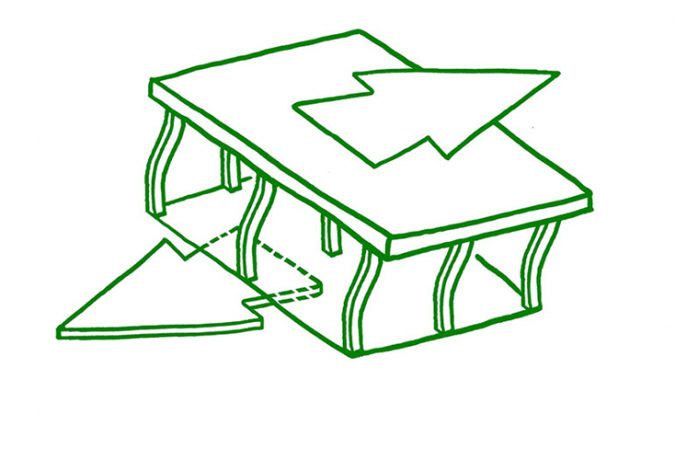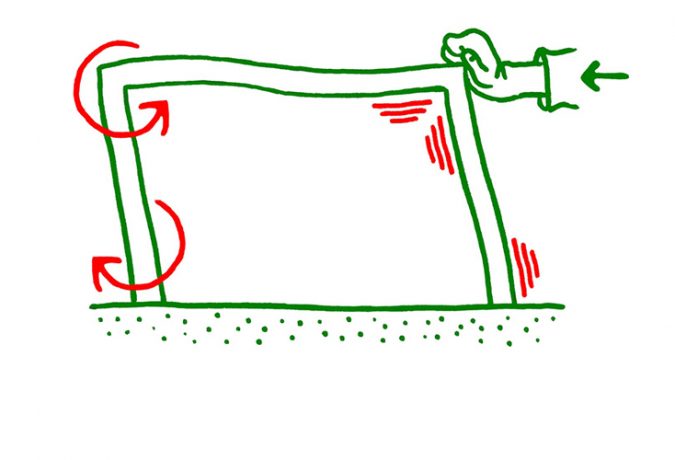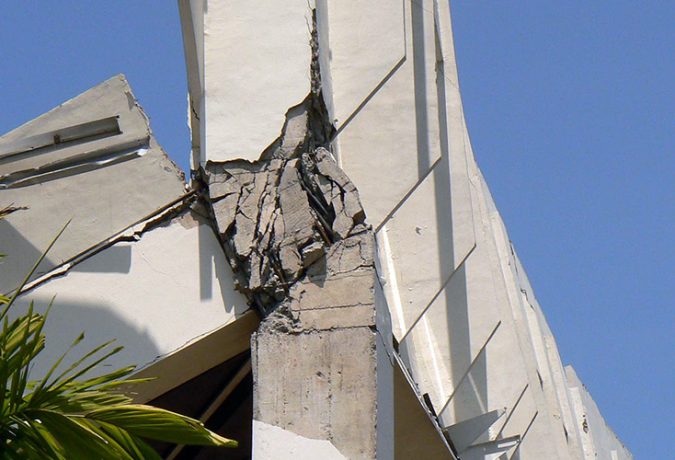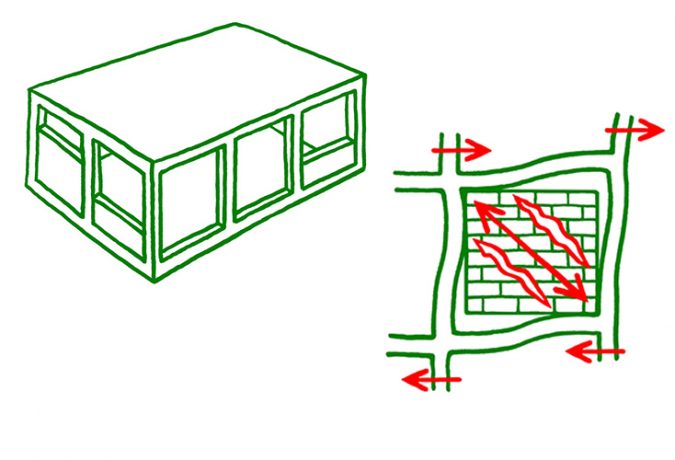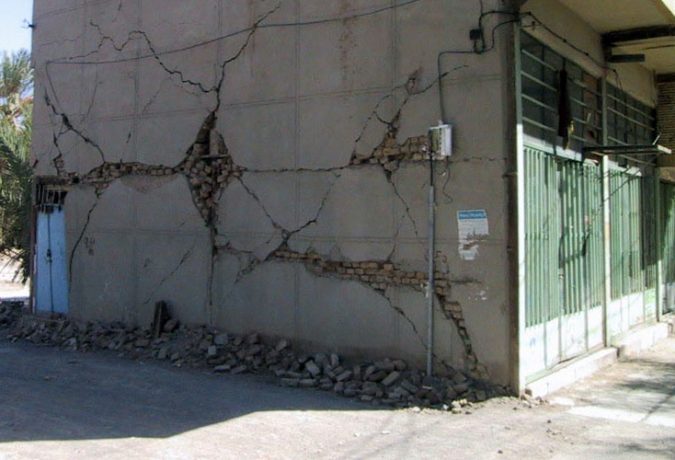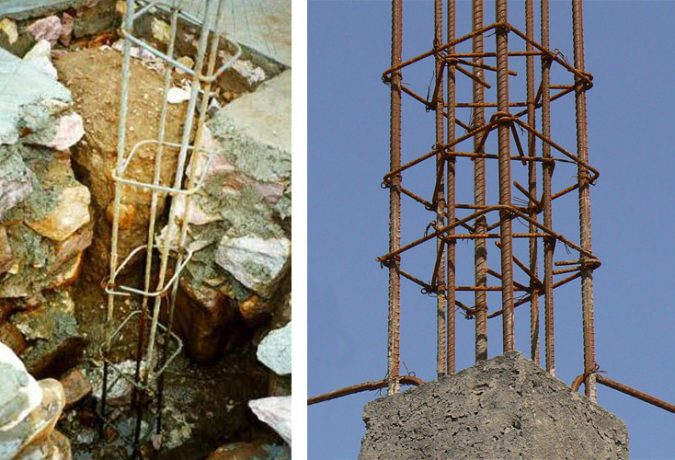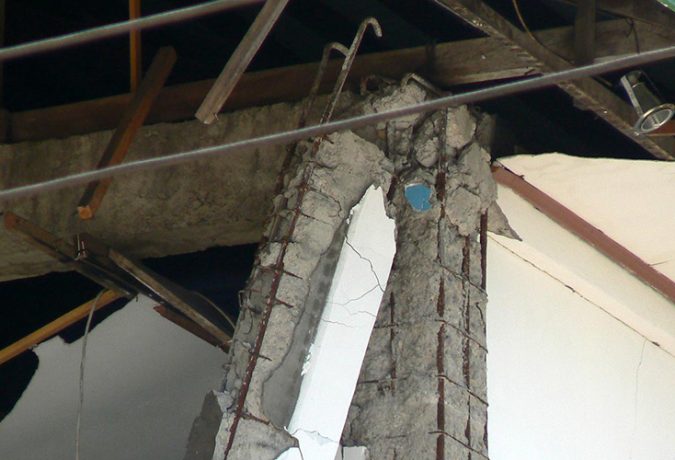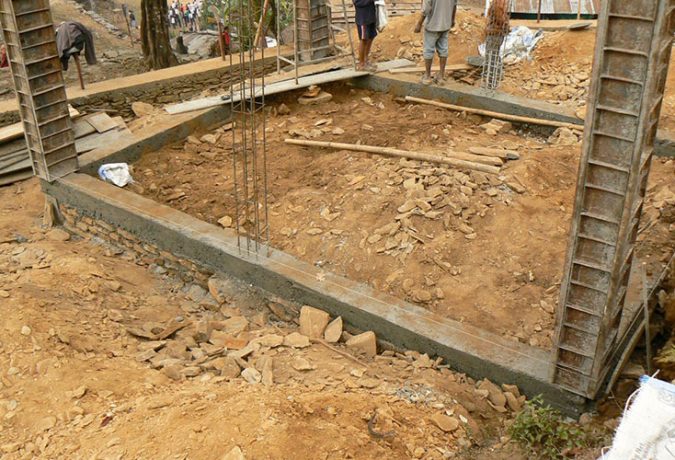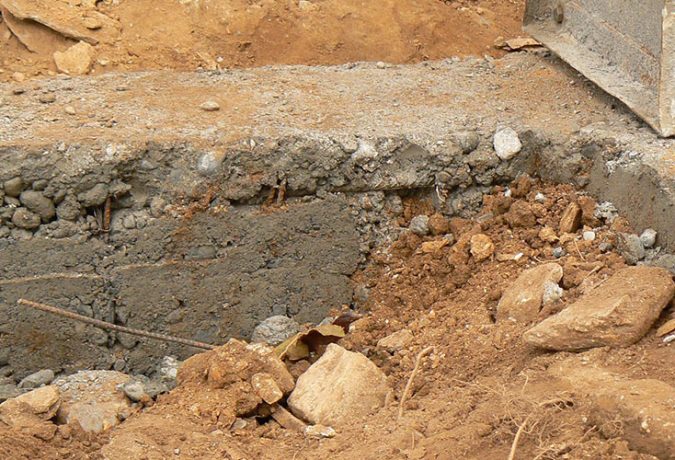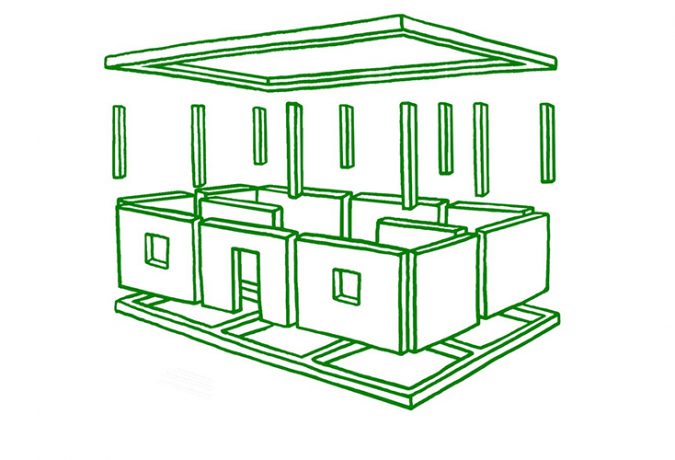Confined Masonry
This earthquake resistant type of construction we recommend for multi-storey buildings, with concrete slabs up to 3 floors high. But of course it can be used as well for buildings with only a ground floor.
The technique is called confined masonry, which we used with our hostel for blind students, as well as with a school in Indonesia. The basics are described on this page.
Confined masonry is cheaper than building with RCC frames and brick infill. Confined masonry uses about the same amount of bricks and concrete, but far less steel reinforcement is needed. Also, the connections are quite easy to explain to the local laborers.
If you need more information, we will gladly provide you with more technical details. On request we can also make a design for you, and if you need assistance with the execution of your building, we can forward you to our local partner SEED Foundation in Nepal. Just send us an email via the contact page.
Confined Masonry for Multi-Storey Buildings
The following description applies for buildings that have 2 to 3 floors. Confined masonry has historically proven to behave well in earthquakes. Interestingly, it is even cheaper and less complicated than to make a concrete frame earthquake resistant!
The basics of confined masonry are not too difficult and the wall dimensions, thicknesses and openings can be calculated, as well as the required amount of steel reinforcements. We recommend to follow the steps as described in the tutorial ‘Seismic Design Guide for Confined Masonry Buildings’, by Svetlana Brzev et al.
In the picture gallery below you see some of the basics of confined masonry versus RCC frames. The gallery also gives you an idea of how we built our hostel. No dimensions are given, as they need to be calculated for each design.
Basics 1. How confined masonry works compared to RCC frames.
RCC Frames (reinforced cement concrete) behave differently under seismic loading, than a wall panel made of bricks:
- During an earthquake, an RCC frame needs to cope with torsion forces, which occur in the top and bottom connections.
- To resist those forces, specific steel reinforcements need to be applied, with certain ways of weaving, connecting and overlapping between columns and beams.
- To make a frame earthquake resistant, it needs 2 to 2.5 times more steel reinforcements that normal frames.
- In developing countries it is common practice to entirely fill up the frames with bricks or blocks. While a frame wants to ‘dance’ during a seismic event, the stiff brick panel wants to remain where it is and starts to work against the movements in the frame.
- Two things may happen. The top and bottom parts of the frame connections literally explode. And the infill panel endures shear cracking and may fall out of the frame.
Confined Masonry however works the other way around:
- Here the wall panels and the concrete structure are built in such a way, that they start working together.
- The whole structure is divided in shear panels, where each panel will be subject to shear forces during a seismic event.
- The way of construction is also the other way around. Walls are built first, with toothed wall ends. The columns and beams are cast in-between later, and grip with the wall ends.
- The amount of steel in the tie-columns and tie-beams of a confined masonry building is less than even a normal RCC frame, and therefore much less than in an earthquake resistant seismic frame.
- The amount of concrete and bricks in confined masonry is similar to a building with a normal RCC frame.
Basics 2. Summary of Confined Masonry vs RCC frames.
- It is difficult and expensive to make RCC frames earthquake resistant, as frame and infill generally work against each other.
- With confined masonry the walls, columns and beams will work as one. The costs of steel reinforcements are lower and the connections are easier.
Basics 3. Quality Control.
There are some mayor problems with RCC frames in developing countries:
- The system of how to make RCC earthquake resistant is unknown to most, and especially in remote areas.
- The people generally do not know how to make good quality concrete.
- The detailing and weaving of all bars needs to be done in specific ways. The workers are generally unaware about the correct detailing of steel reinforcements.
- Steel is expensive, and to save costs the people generally do not put in all the necessary bars and stirrups, or use too small bar diameters.
- The result is badly detailed and too weak connections, which have a high risk of collapse during of the whole structure.
Basics 4. Stick to what they know.
- One important rule we learned is, to stick with what local construction types the people know (rubble stone, bricks, blocks), and then show them how to improve the safety and quality of those systems.
- We do not promote RCC systems at all. Sure, we know how to do it right, but we may set a bad example. The people do not know how to repeat it correctly and safely, which will only result in buildings that are even more dangerous.
Basics 5. Some rules of thumb.
The following is based on the tutorial ‘Seismic Design Guide for Confined Masonry Buildings’, by Svetlana Brzev et al:
- A regular building layout is one of the key requirements for satisfactory earthquake performance.
- The building should not be excessively long. Ideally, the length-to-width ratio should not exceed 4.
- Since the earthquake performance of confined masonry buildings largely depends on the shear resistance of masonry walls, it is essential that sufficient number, and a certain total length of walls, are provided in each direction.
- The walls should be built in a symmetrical manner to minimize torsional effects. They should also be placed as far apart as possible, preferably at the exterior of the building.
- Wall density is one of the key parameters influencing the seismic performance of confined masonry buildings. It is the relation between the cross-sectional area of all walls in one direction, and the total floor area, and must be calculated. See the manual for this.
- The walls should be continuous over the height of the building. Openings (doors and windows) should be placed in the same position over the height of the building.
- All masonry panels must confined with tie-columns and tie-beams on all four sides. Maximum spacing of tie-columns should not exceed 6 meter for regions of low and moderate seismicity, and 4.5 meter for regions of high and very high seismicity.
- A minimum wall thickness (t) of 120 mm is required. The maximum wall height / thickness ratio (H/t) for walls in one or two-story buildings must not exceed 25.
- The bricks must be of good and strong quality, with a certain minimum compression strength. Masonry units with horizontal perforations and adobe (sun-dried earthen units), are not recommended for confined masonry construction.
- Tie-columns and tie-beams should extend to the top of the parapet, when this height exceeds 0.5 meter.
- It is not recommended to make the gables with bricks or blocks. It is better to tie wooden frames at the wall ends and build the roof as one rigid element.
